Get To Know Your Plumbing
 05 February 2019
05 February 2019 

The Basics You Need to Know About Your Pipes
You rarely think about the pipes supplying fresh water to your house and carrying sewage and wastewater away. However, their age and condition can sometimes keep you awake at night and cause you a great deal of stress and expense. So here are key facts about plumbing in Arizona homes and what you can do to care for it:
What material are your pipes made from and will they last forever?
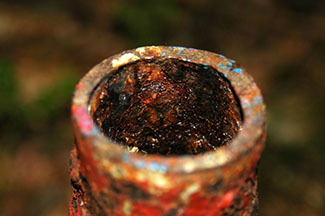
If your home was built in the 1940s or early 1950s, your plumbing may be near the end of its useful life. That's because your water delivery system consists of galvanized steel pipes that can rust away. Perhaps you see rust in your water when you first turn on a faucet. Drain lines, probably made of cast iron, can also corrode.
All that might cause leaks in pipes behind walls or under the slab beneath your flooring. A limited leak or two can be fixed, but if a plumber runs a camera through a pipe, bigger problems may show up. A new water supply line might need to be run through the walls and up into the attic. If a drain line leading to a sewer breaks into pieces, a new line must be installed out to the street.
In the late 1950s and in the 1960s, builders started using hard copper lines, according to Joseph Skok of Thunderbird Plumbing in Surprise and Glendale. In the '70s and '80s, a "softer" copper was used in lines where the pipe needed to be bent. Although copper can last 50 to 70 years, those pipes may corrode, too. Corrosion may be due to contact with concrete, rebar or rocks.
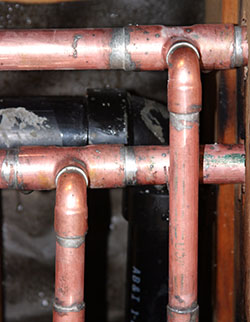
In the 1970s, the use of plastic drain lines (ABS/DWV) in residential construction became the norm. This product --acrylonitrile butadiene styrene – used for drain, waste and vent piping was easier to work with, had a smoother interior wall finish, and lasts longer than cast iron drain lines, according to Wes Baker of Brutinel Plumbing in Casa Grande.
But in the late 1970s to mid-1990s, some homes were built with another synthetic product -- polybutylene piping, used for water supply lines. PB, as it was called, was popular because of its low cost and easy installation. But PB was very prone to leaks and pipe breaks and has now been banned for use in the United States. Homes with these plumbing systems should be re-piped, a process that can cost thousands.
Since the 1990s, more and more new homes are being built with high density PEX (polyethylene) pipe. PEX is extremely strong, and installing PEX is less costly than installing copper due to its flexibility and fewer joints. When it's used, builders say, there is less possibility of water hammer and calcium deposits.
Can you prevent problems?
Avoid pouring caustic chemicals down your pipes. Liquid drain cleaners can do more damage than you think. Instead use a natural non-poisonous product which uses a blend of bacteria and enzymes to attack organic wastes like hair, grease and food particles. You can even use it monthly to avoid clogs. A whole-house water softener can also prevent some kinds of corrosion due to the calcium and magnesium present in Arizona's hard water.
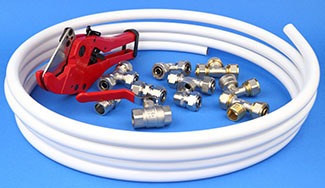
How you can spot serious leaks?
If there's an unusually high increase in use on your water bill, you might suspect a leak. When there's a leak under your slab, tile flooring might crack or start warping. There can also be damp areas that show up on your floor.
There can be wet spots on the drywall in a bathroom or kitchen, and mold or mildew could build up in some areas where leaks occur.
If you can't find a leak but think you have one, you can turn off all fixtures in the house and then check your water meter to see if the flow indicator is spinning.
The easiest solution? Call a plumber.
Do you have sewage smells in your yard or house?
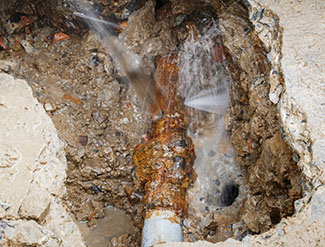
Sometimes that semi-permanent bad smell in your bathroom or kitchen or backyard is really a problem starting on your roof where your plumbing system has a vent. In many cases, the vent isn't tall enough. When a gust of wind comes along – our southwest wind blowing up from the Gulf of California – it blows those smelly gases across your roof and into your north or east facing yards. The wind can even swirl around and blow methane gas back into your house through a window or back down the vent.
This isn't just a problem for older homes; in fact, it can happen in new construction. We have actually seen this in multi-million dollar homes.
But it can be fixed with minimal effort. First, you need an extension on that vent pipe. That should do the trick, but if not, add a charcoal filter to the vent to absorb the gases or an inline powered ventilating fan to blow them away or do both.
Do you have odor problems in your drains?
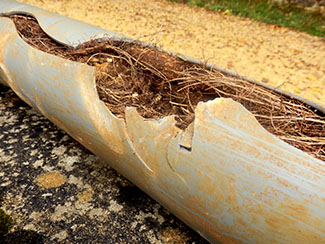
A problem with a vent can affect all the drains in your house, but if the smell involves one sink, then it may be coming from your P-trap (the U-shaped pipe under the sink) which maybe empty due to lack of use. Or there might be a build-up of debris in the overflow drain for the sink. Try cleaning that drain out with a brush and then pour hot water through a funnel down the drain.
What if a tree invades a sewer line?
As tree roots grow and get bigger in size, it is possible for them to crack or crush nearby sewer lines, according to Baker of Brutinel. He also told us: "This allows them to enter and grow in a nutrient and water rich environment. but this problem can be managed by cutting the roots out with a root cutter, and applying rock salt or copper sulfate or a foaming agent. But if the blockages become too frequent, the line will have to be excavated and repaired. In some cases, you can insert a new pipe liner after thoroughly cutting out the roots."
In an emergency, how do you turn off the water to the whole house?
Before working on any water pipes or fixtures, find the shut-off valve for your whole house water supply. There should be one outside, usually near the front of the house where the water pipe travels into your home, but sometimes toward the back.
It's not that you have to shut off all your water before a repair job; you can also shut it off at the fixture itself. But with any repairs, you need to know where that valve is in case something goes wrong and you must cut off all water quickly. If you don't have a whole house shutoff immediately available and in working order, have a plumber install one soon.
In case of a water emergency of any kind, everyone in the family should know how to turn off the water for the whole house.
###
RELATED CONTENT:
- Blog: How To Stop Leaks Before They Start
- DIY FAQ: How Can I Prevent My Pipes From Freezing?
- Blog: What To Do When The Floor Starts Heaving
- Blog: Ten Facts You Need To Know About Water Damage
- DIY FAQ: Rosie's Water Treatment Consumer Guide
- Podcast: Why Arizona Water Needs Special Treatment
Print this page
recent post
- Duck, Duck, Duct! How Often Should Ductwork Be Cleaned?
- Vinyl vs. Fiberglass Windows: Which Is The Better Choice Of Replacement Window?
- We May Be The Grand Canyon State, But The Rocky Mountains Are Important For Arizona
- Welcome to Arizona! Things A Newbie to Arizona Should Know
- The Pros & Cons of Buying A Flipped House
- Getting In On The Ground Floor
- Why It’s More Critical Than Ever To Get Your AC Serviced Before Summer
- The Reality of Remodeling
- What To Look For When Comparing Your Roofing Quotes
- What To Expect When Buying New Windows & Doors
